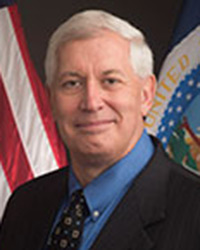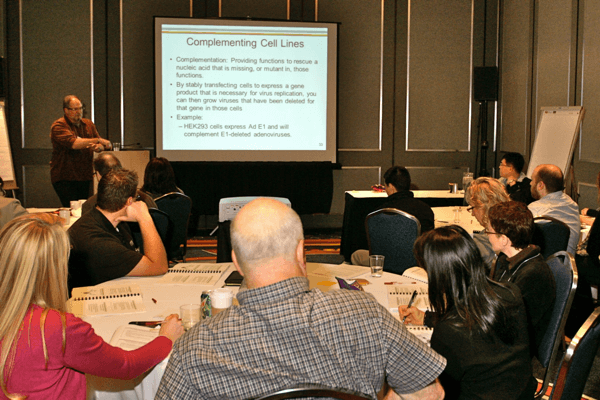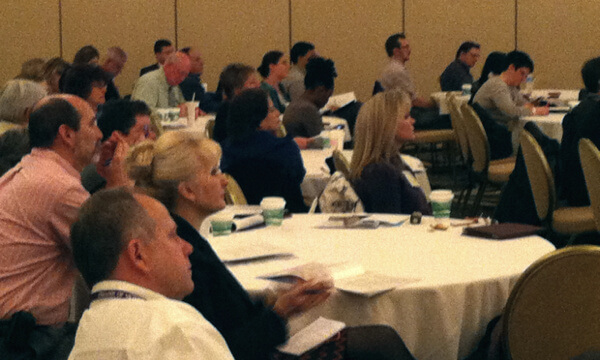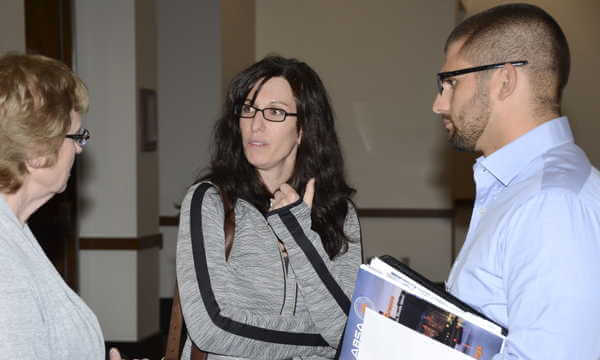Friday, February 26, 2021 from 11:00 am – 3:00 pm CST
1. Agriculture Biosecurity & Emergency On-Farm Response

Adrian Self, Kansas State University, Manhattan, KS

David Hogg, MS, Kansas State University, Manhattan, KS
The course will focus on the best practices and safety issues associated with an agriculture emergency, including: quarantines, biosecurity, euthanasia, disposal, use of personal protective equipment (PPE), and cleaning and disinfection. The course will help increase knowledge of coordination efforts needed for responding to an agricultural emergency across jurisdictions, lines of authority, and disciplines by examining the integration of response efforts.
Objectives:
- Define agriculture emergency and recognize vulnerabilities of agricultural systems
- Recognize the various groups, authorities, and jurisdictions that will play major roles in a foreign animal disease event
- Identify steps to determine the presence of disease, process of diagnostics and surveillance, and the need for deployment of personnel
- Discuss the roles of Incident Command and Unified Command
- Restate the importance of continuity of business planning within a control zone
- Suggested Background: Responders with some knowledge level of incident response, but limited to
no knowledge of agricultural practices
Target Audience: Emergency responders potentially involved in agricultural incidents – both
traditional first-response organizations (law enforcement, fire, etc.) and non-traditional first responders who may have skills that could be useful in a large-scale agricultural response, such as laboratory scientists.
Audience Level: Basic
Course Length: 4 hours (one 4-hour live session)
(NOTE: This webinar is a part of the USDA ARS 6th International Biosafety and Biocontainment Virtual Symposium. However symposium registration is not required. If you are not attending the symposium choose the “ARS Course Only Registration” option.
Wednesday, February 24 and Wednesday, March 3, 2021 from 1:00 pm – 3:00 pm CST
2. High-Containment Facility Operations Risk Analysis

Miguel Grimaldo, University of Texas Medical Branch—Galveston, Galveston, TX
Operations of High-Containment facilities require proper planning, installation, maintenance, auditing, and training. When funding is limited and needs are enormous, developing a facility operations risk analysis could let the institution focus on priority items. The first part of the class will discuss the elements to develop a risk analysis utilizing ISO 31000 Risk Management Standard. Part two will carry out hands-on activities to develop a risk analysis example.
Objectives:
- Describe the Risk Management Process
- Restate the difference between Risk Identifications and Risk Management
- Create awareness for the need of Facility Operations Risk Analysis
Suggested Background: Facility Operations and Management, Biosafety and Biocontainment
Operations
Target Audience: Facility and Maintenance Managers, Biosafety and Biocontainment
Managers
Audience Level: Intermediate
Course Length: 4-hours (Two 2-hour live sessions with a group project to be discussed
during the second session)
(NOTE: This webinar is a part of the USDA ARS 6th International Biosafety and Biocontainment Virtual Symposium. However symposium registration is not required. If you are not attending the symposium choose the “ARS Course Only Registration” option.
Tuesday, March 2 and Thursday, March 4, 2021 from 11:00 am – 3:00 pm CST
3. Agriculture Biosecurity
Stephen Goldsmith, DVM, Federal Bureau of Investigation, Washington, DC

Joanna Davis, DVM, USDA Animal Plant Health Inspection Service, Tifton, GA

Robert Ellis, PhD, CBSP(ABSA), Colorado State University, Fort Collins, CO
Agriculture Biosecurity will begin with a description of the unique management practices and the challenges of open range ranching in the mountain west. The course will continue with an introduction of the concepts agro- and bioterrorism. To mitigate the effects of a terror attack or criminal act, this course will introduce animal and plant health experts to joint epidemiological and criminal investigations alongside law enforcement. Doing so could lead to a more rapid and efficient recognition, detection, and response to unusual zoonotic, emerging, and transboundary disease outbreaks in both animals and plants.
Objectives:
- Recognize the management and challenges of open range ranching
- Summarize the risks to animal and plant health by agroterrorists and criminal actors
- Describe the tools for agriculturists to use to engage law enforcement for mitigating and responding to terroristic or criminal threats toward animal and plant targets
Suggested Background: None
Target Audience: Individuals from animal or plant health disciplines
Audience Level: All levels
Course Length: 8 hours (two 4-hour live sessions)
(NOTE: This webinar is a part of the USDA ARS 6th International Biosafety and Biocontainment Virtual Symposium. However symposium registration is not required. If you are not attending the symposium choose the “ARS Course Only Registration” option.
Thursday, March 11, 2021 from 12:00 pm – 4:00 pm CST
4. Communicating Effectively During High-Concern Situations
Joelle Hayden, USDA Animal and Plant Health Inspection Service, Riverdale, MD
Did you know that the rules for effectively communicating information in a high-concern situation are different? If you regularly need to communicate information that is highly technical, controversial, regulatory or about a high-concern topic, this training is for you! You will learn how to communicate effectively with stakeholders, the public, and other audiences to help them understand your message. The course includes an overview of risk communication theory, message mapping, and team exercises to address realistic communication scenarios.
Objectives:
- Explain the four theories associated with risk communications, including how to adjust communications to combat each theory
- Use the risk communications concepts and message mapping to develop strong messages on a high-concern topic
- Implement the message mapping process into their work routine
Suggested Background: None
Target Audience: Training Target Leaders and Subject Matter Experts who interact (or likely to
interact) with the public or stakeholders on highly technical, controversial, regulatory, or high-risk topics
Audience Level: Basic
Course Length: 4 hours (one 4-hour live session with breakout groups)
(NOTE: This webinar is a part of the USDA ARS 6th International Biosafety and Biocontainment Virtual Symposium. However symposium registration is not required. If you are not attending the symposium choose the “ARS Course Only Registration” option.
Thursday, February 25, 2021 from 11:00 am – 3:00 pm CST
6. Agricultural Biosecurity & Emergency Response

Doug Meckes, DVM, North Carolina Department of Agriculture, Raleigh, NC

Jack Shere, PhD, USDA Animal Plant Health Inspection Service, Riverdale, MD

Michael Martin, BS, North Carolina State University, Raleigh, NC
This course will provide an overview of preparedness and response activities to animal diseases and natural disasters at the state level. Prior to the 2020 hurricane season, North Carolina (NC) experienced 3 hurricanes in 3 years, none this year thank goodness, and in the response to those hurricanes, NC has managed the animal agriculture mortality through composting. In doing so, NC has effectively prevented environmental impacts and public health implications potentially associated with loss of poultry throughout Eastern NC. From those experiences, the NC response team has moved forward with additional efforts to compost other animal agriculture species. There will also be an update on NC’s experiences with the use of the CO2 depopulation containers designed and built here in the state to manage overstocked pigs and hogs in response to compromise of swine processing plants. There will also be a presentation on the federal response and coordination in a Foreign Animal Disease (FAD) outbreak in the United States. How Aphis coordinated a myriad of aspects of a disease outbreak with the states and other federal agencies. This will enable emergency managers to understand the flow of operations and policy that occur during a foreign animal disease outbreak and where their collaboration and coordination is needed.
Objectives:
- Restate the management needed for natural disasters with animal agriculture implications
- Describe effective composting techniques for both poultry and livestock
- Restate CO2 depopulation to humanely, effectively, and efficiently depopulate livestock
- Identify the flow of operations in an FAD from start to finish
- Recall how their programs or state agencies are incorporated into an FAD response
- Summarize the scope and complexity of FAD responses in the US
Suggested Background: Knowledge of ICS and some emergency management trainingTarget Audience: Individuals involved in prepared and response activities, Emergency
Managers of collaborating programs/agencies in emergency and animal disease response
Audience Level: All levels
Course Length: 4 hours (one 4-hour live session)
(NOTE: This webinar is a part of the USDA ARS 6th International Biosafety and Biocontainment Virtual Symposium. However symposium registration is not required. If you are not attending the symposium choose the “ARS Course Only Registration” option.
Friday, March 12, 2021 from 12:00 pm – 4:00 pm CST
7. Managing Research Safety During Pandemic Conditions

Bruce Whitney, PhD, The Texas A&M University System, College Station, TX

David M. White, DVM, PhD, RBP(ABSA), DACVM, U.S. Department of Agriculture, Ames, IA

R. Brooks Moore, BBA, JD, The Texas A&M University System, College Station, TX
While most institutions had approved pandemic response plans prior to January 2020, these plans had to be modified to meet the specific circumstances of the COVID-19 pandemic. Using the experience at two institutions, one academic and one non-academic, as examples, we will show how we responded to this unique situation and discuss the importance of the involvement of the legal team in this process.
Objectives:
- Implement and operate a Pandemic Response Team
- Recognize the role of legal professionals in the pandemic response
- Restate the purpose and role of a Pandemic Response Plan
Suggested Background: None
Target Audience: All stakeholders responsible for oversight of safety and/or research including
safety
Audience Level: Basic-Intermediate
Course Length: 4 hours (one 4-hour live session)
(NOTE: This webinar is a part of the USDA ARS 6th International Biosafety and Biocontainment Virtual Symposium. However symposium registration is not required. If you are not attending the symposium choose the “ARS Course Only Registration” option.





